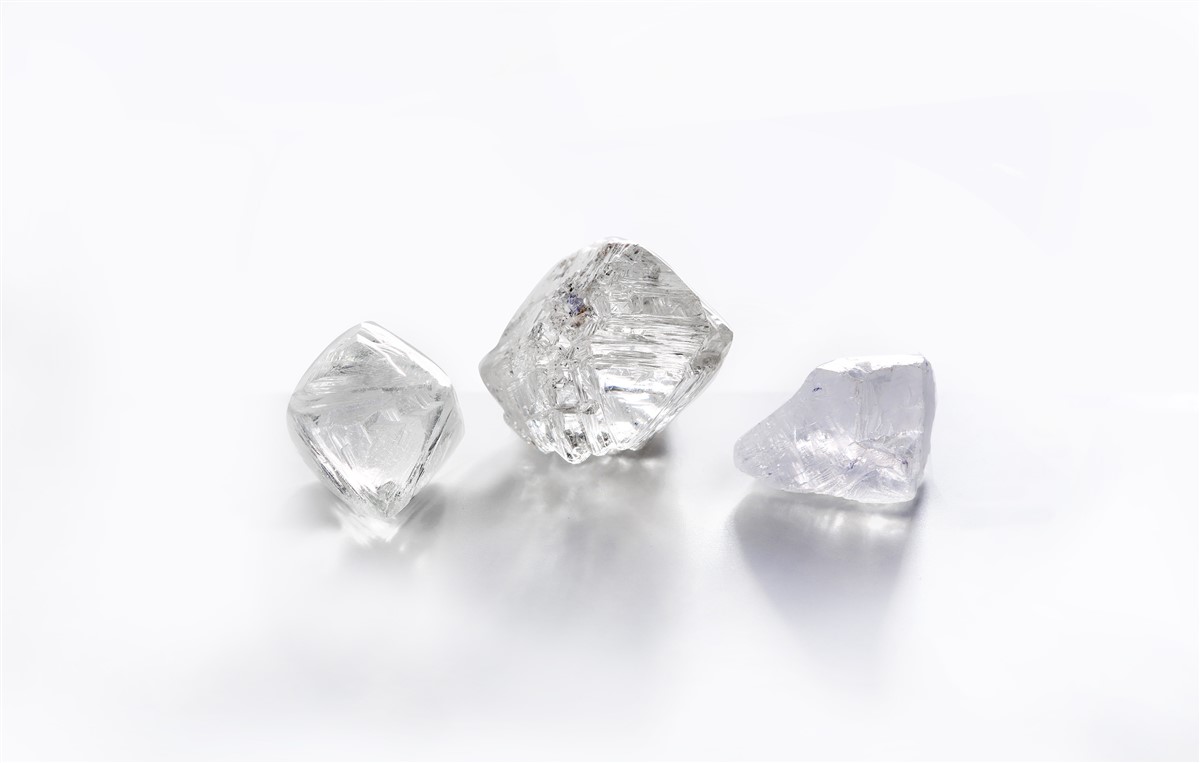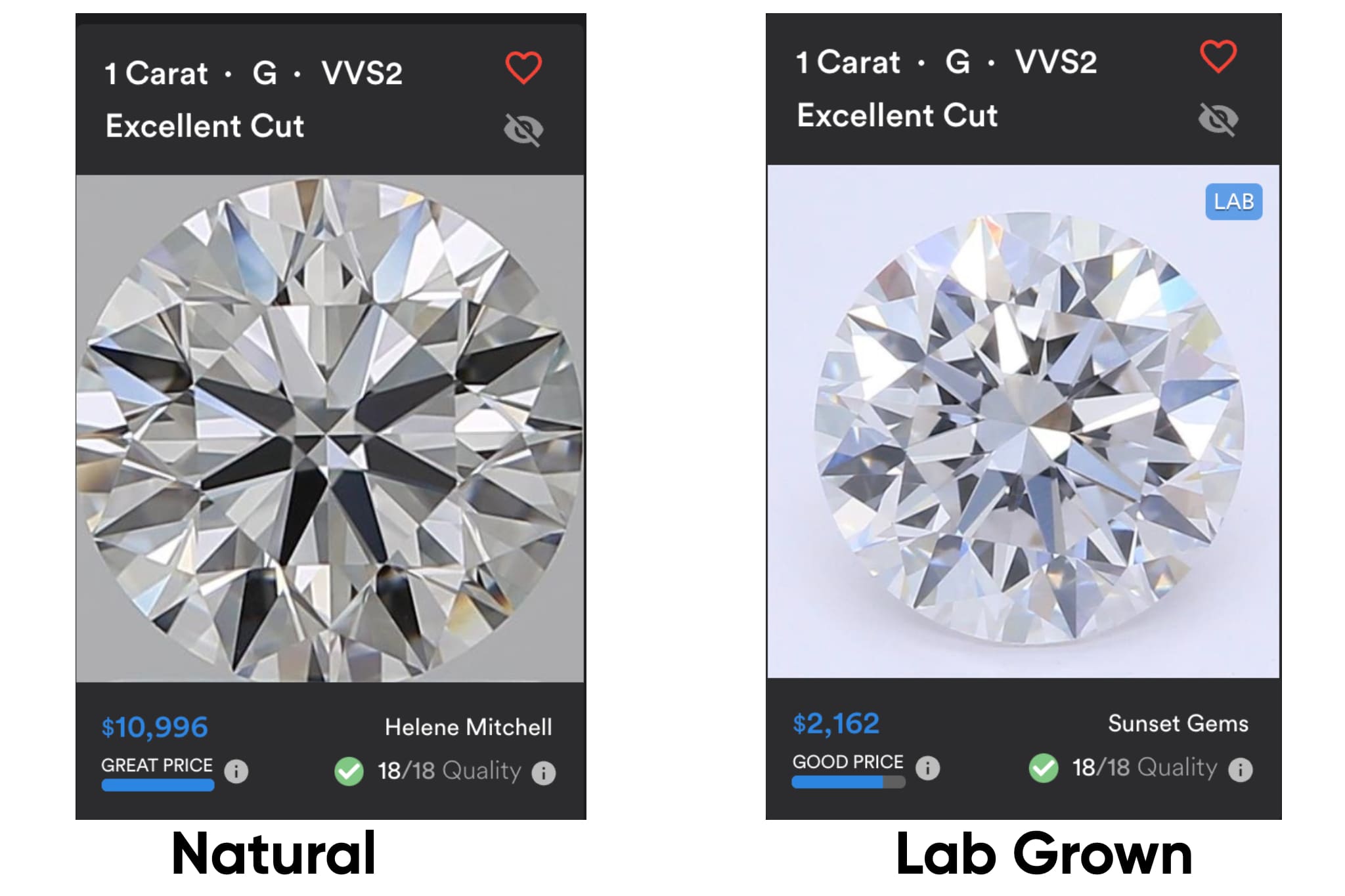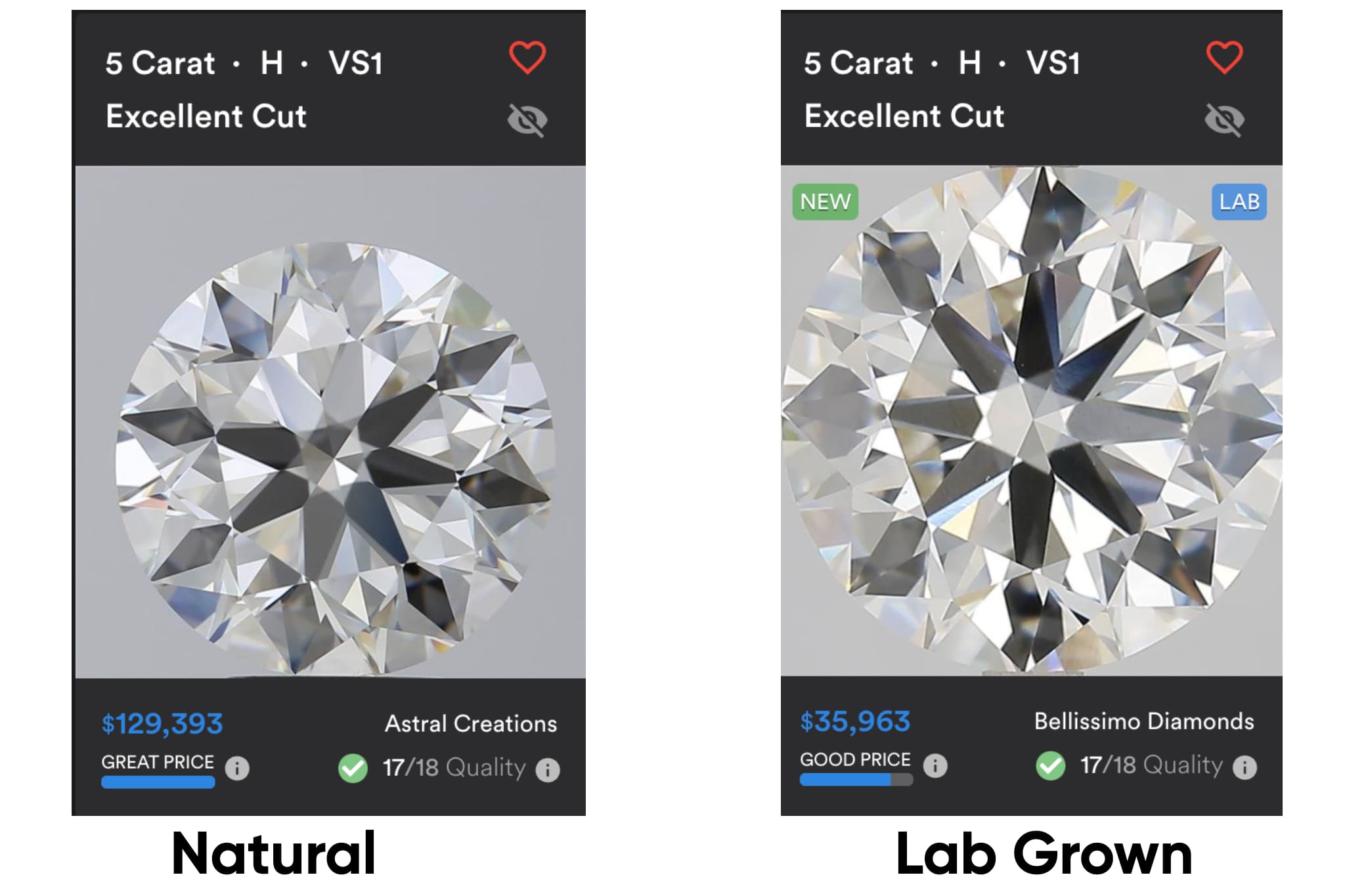Chemical Vapor Deposition vs High Pressure, High Temperature Lab Diamonds
A detailed overview comparing lab grown and natural diamonds
- Lab diamonds equal natural diamonds in quality, hardness and sparkle
- Experts need specialized tools to tell them apart
- Cost 35-80% less than natural in the same specifications
- Follow the same grading system (color, clarity, cut) as mined diamonds
- Personal preference decision between savings and natural rarity
Welcome to the world of diamonds, where in this day in age, we now have two options- mined natural diamonds that came from the Earth, or lab diamonds, which are grown by us humans instead of the planet. It's taken a lot of time, education, research and money to get to this point. But with this newbie coming into the brilliant sparkly game, are they worth it? Do they look fake? Are they a cheap alternative? Do they last? These questions and more, we'll cover all there is to know about lab growns!
What are laboratory created diamonds?

There's two different kinds of lab grown diamonds (LGD). The first is called CVD (chemical vapor deposition) which uses a vacuum chamber and microwaves (the actual waves, not the machine that we're used to cooking popcorn in) to heat carbon rich gas to extreme temperatures. Once the gases get hot enough, the carbon-gas molecules start to break down, and the carbon atoms start to rearrange themselves into the same orientation as the diamond seed set internally. A diamond seed is a tiny bit of diamond, set inside the vacuum to help the atoms know how to fall into place. Once they are rearranged as their seed friend, a diamond is formed.
The next is HPHT (high pressure, high temperature). This is the next best thing to how the Earth creates diamonds. Naturally, diamonds are formed under the Earth's crust, with extreme pressure (imagine the literal weight of the world) and extreme temperatures (think of how hot the area is right above magma chambers). So internally, A special chamber is packed with carbon, and heated to those extreme temperatures and pressure- 5,000 degrees F, and 1.5 million pounds of pressure per square inch to be exact. Once this process is done, bam! Big, (hopefully) beautiful diamond.
How are lab growns different than natural diamonds? Can you tell them apart?
So since lab growns are created to have identical chemical and molecular arrangements as natural, they also have the same hardness and optical properties. This means that LGD are IDENTICAL to natural, with the exception of certain inclusions that can only be found in one or the other. It will take the help of a trained gemologist or jeweler to use a microscope to search for these little left over internal characteristics, and even then- if the diamond is internally flawless, sometimes there's no way to discern other than the report that is issued along side the laser inscription from the grading lab.
Even though scientists and professionals are growing these diamonds in a lab, that doesn't mean they are all perfect and giant. While the lab grown aspect takes a lot of inclusion possibilities out of the picture, there's still plenty of things that can affect the outcome grade of the diamond. So this is why LGD's are graded the same way as naturals, and you can still find all the ranges of grades in them, from FL to SI2 and lower.
Whats the price difference between lab grown and natural?

Once you start your diamond search, you may realize a drastic price difference when it comes to comparing these two carbon beauties. In this example, we're using a price comparison for a 1ct, G color, VVS2 clarity diamond with excellent cut grade on both. The natural comes in at $10,996 and the lab grown option at $2,162. Obviously, that's a huge chunk of change you're saving here! In this case, it's a 80% difference. Other cases, it may not be as big. Usually, rule of thumb is about a 25-40% difference.
What's the downside to lab-made diamonds?
Ultimately, there's not a list of negatives to lab growns. The biggest would be the resale value. While a natural diamond, should the need arise, you could usually get a 50% return back from what you originally paid. However, with LGD's, there's little to no resale market for them. This means that if you wanted to sell your diamond later on, you either wouldn't be able to find a buyer easily, and if you could, you wouldn't get much back for it.

But, one of the biggest selling points to LGD's are that they are less expensive. So even though you may not be able to resale the diamond later, you saved a lot in the first place. Take this example- if you were weighing your options for a 5ct. G VS1 diamond, going with the lab will save you over $93k versus a natural option. So in reality, even though you can't resell the diamond for much, you can spend that sweet $90k savings on way cooler things- like more diamonds! Or a house, car, you know- important stuff too.
So what's the verdict? Which is better?
This isn't an easy answer, because everyone has different perspectives on what is important and meaningful to them. Some may desire to be able to say you have a diamond that the Earth put billions of years of work into to create that gorgeous rock on your finger, while others may have more importance on saving money, while also wanting the next best thing to a natural diamond. No matter what, always weigh your options and look into all avenues of getting your bling. It's no problem wanting one over the other, this is YOUR dream diamond, and you should get just what you want!
**Prices reflected as of February 2022, these can change as the market value for both lab grown and natural diamonds goes up or down.

